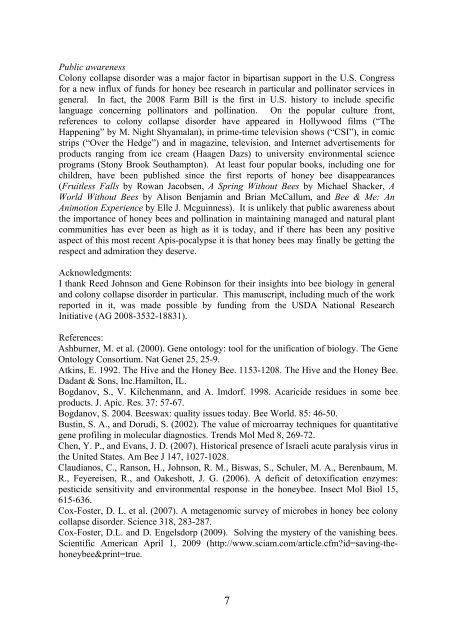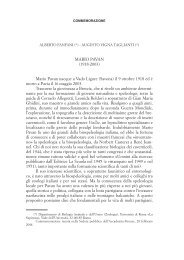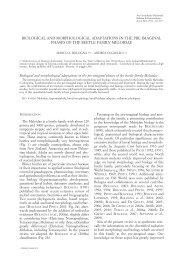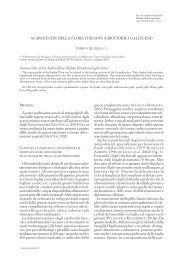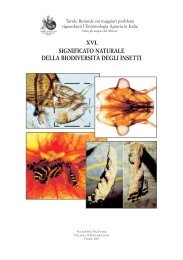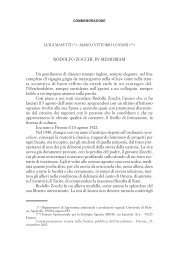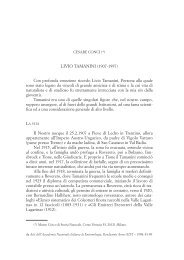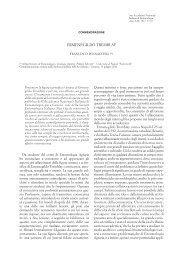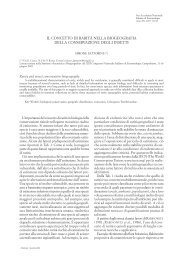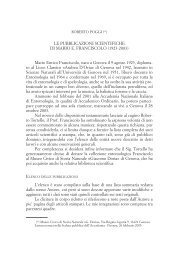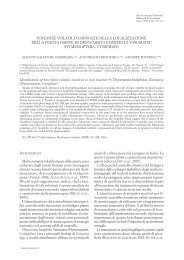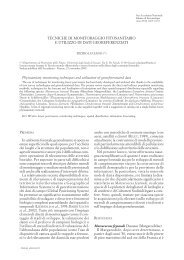Public awareness Colony collapse <strong>di</strong>sorder was a major factor in bipartisan support in the U.S. Congress for a new influx of funds for honey bee research in particular and pollinator services in general. In fact, the 2008 Farm Bill is the first in U.S. history to include specific language concerning pollinators and pollination. On the popular culture front, references to colony collapse <strong>di</strong>sorder have appeared in Hollywood films (“The Happening” by M. Night Shyamalan), in prime-time television shows (“CSI”), in comic strips (“Over the Hedge”) and in magazine, television, and Internet advertisements for products ranging from ice cream (Haagen Dazs) to university environmental science programs (Stony Brook Southampton). At least four popular books, inclu<strong>di</strong>ng one for children, have been published since the first reports of honey bee <strong>di</strong>sappearances (Fruitless Falls by Rowan Jacobsen, A Spring Without Bees by Michael Shacker, A World Without Bees by Alison Benjamin and Brian McCallum, and Bee & Me: An Animotion Experience by Elle J. Mcguinness). It is unlikely that public awareness about the importance of honey bees and pollination in maintaining managed and natural plant communities has ever been as high as it is today, and if there has been any positive aspect of this most recent Apis-pocalypse it is that honey bees may finally be getting the respect and admiration they deserve. Acknowledgments: I thank Reed Johnson and Gene Robinson for their insights into bee biology in general and colony collapse <strong>di</strong>sorder in particular. This manuscript, inclu<strong>di</strong>ng much of the work reported in it, was made possible by fun<strong>di</strong>ng from the USDA National Research Initiative (AG 2008-3532-18831). References: Ashburner, M. et al. (2000). Gene ontology: tool for the unification of biology. The Gene Ontology Consortium. Nat Genet 25, 25-9. Atkins, E. 1992. The Hive and the Honey Bee. 1153-1208. The Hive and the Honey Bee. Dadant & Sons, Inc.Hamilton, IL. Bogdanov, S., V. Kilchenmann, and A. Imdorf. 1998. Acaricide residues in some bee products. J. Apic. Res. 37: 57-67. Bogdanov, S. 2004. Beeswax: quality issues today. Bee World. 85: 46-50. Bustin, S. A., and Doru<strong>di</strong>, S. (2002). The value of microarray techniques for quantitative gene profiling in molecular <strong>di</strong>agnostics. Trends Mol Med 8, 269-72. Chen, Y. P., and Evans, J. D. (2007). Historical presence of Israeli acute paralysis virus in the United States. Am Bee J 147, 1027-1028. Clau<strong>di</strong>anos, C., Ranson, H., Johnson, R. M., Biswas, S., Schuler, M. A., Berenbaum, M. R., Feyereisen, R., and Oakeshott, J. G. (2006). A deficit of detoxification enzymes: pesticide sensitivity and environmental response in the honeybee. Insect Mol Biol 15, 615-636. Cox-Foster, D. L. et al. (2007). A metagenomic survey of microbes in honey bee colony collapse <strong>di</strong>sorder. Science 318, 283-287. Cox-Foster, D.L. and D. Engelsdorp (2009). Solving the mystery of the vanishing bees. Scientific American April 1, 2009 (http://www.sciam.com/article.cfm?id=saving-thehoneybee&print=true. 7
Debnam, S., Westervelt, D. and Bromenshenk, J. (2009). Colony collapse <strong>di</strong>sorder symptoms. Bee Culture: http://www.beeculture.com/storycms/index.cfm?cat=Story&recordID=629 Decourtye, A., Devillers, J., Cluzeau, S., Charreton, M., and Pham-Delègue, M. (2004). Effects of imidacloprid and deltamethrin on associative learning in honeybees under semi-field and laboratory con<strong>di</strong>tions. Ecotoxicol Environ Saf 57, 410-9. Elzen, P. J., F. A. Eischen, J. B. Baxter, J. Pettis, G. W. Elzen, and W. T. Wilson. 1998. Fluvalinate resistance in Varroa jacobsoni from several geographic locations. Am. Bee J. 138: 674-686. Elzen, P. J., J. R. Baxter, M. Spivak, and W. T. Wilson. 2000. Control of Varroa jacobsoni Oud. resistant to fluvalinate and amitraz using coumaphos. Apidologie. 31: 437-441. Elzen, P. J., J. B. Baxter, D. Westervelt, D. Causey, C. Randall, L. Cutts, and W. T. Wilson. 2001. Acaricide rotation plan for control of varroa. Am. Bee J. 141: 412. Elzen, P. J. and D. Westervelt. 2002. Detection of coumaphos resistance in Varroa destructor in Florida. Am. Bee J. 142: 291-292. Evans, J. D., and Wheeler, D. E. (2000). Expression profiles during honeybee caste determination. Genome Biol 2, research0001.1-research0001.6. Evans, J. D. (2006). Beepath: An ordered quantitative-PCR array for exploring honey bee immunity and <strong>di</strong>sease. J Invertebr Pathol 93, 135-139. Evans, J. D. et al. (2006). Immune pathways and defence mechanisms in honey bees Apis mellifera. Insect Mol Biol 15, 645-656. Frankel, S., G. Robinson, and M. R. Berenbaum, 1998. Antioxidant capacity and correlated characteristics of 14 monofloral honeys. J. Apicultural Res. 37: 27-33. Frazier, M., C. Mullin, J. Frazier, and S. Ashcraft. 2008. What have pesticides got to do with it? Am. Bee J. 148: 521-523. Higes, M., Martín-Hernández, R, Botías, C., Garrido Bailón, E., González-Porto, A.V., Barrios, L, Jesús del Nozal, M., Bernal, J.L., Jiménez, J.J., Palencia, P.G., and Meana, A. (2008). How natural infection by Nosema ceranae causes honeybee colony collapse. Environmental Microbiology 10: 2659 – 2669. Johnson, R.M., 2008. Toxicogenomics of Apis mellifera. Doctoral <strong>di</strong>ssertation, University of Illinois Urbana-Champaign. Johnson, R. M., Wen, Z., Schuler, M. A., and Berenbaum, M.R. (2006). Me<strong>di</strong>ation of pyrethroid insecticide toxicity to honey bees (Hymenoptera: Apidae) by cytochrome P450 monooxygenases. J Econ Entomol 99, 1046-1050. Johnson, R.M., Pollock, H. and Berenbaum, M.R. (2009). Synergistic interactions between in-hive miticides in Apis mellifera. J. Econ. Ent. in press. Lemaitre, B., and Hoffmann, J. (2007). The host defense of Drosophila melanogaster. Annu Rev Immunol 25, 697-743. Lodesani, M., A. Pellacani, S. Bergomi, E. Carpana, T. Rabitti, and P. Lasagni. 1992. Residue determination for some products used against Varroa infestation in bees. Apidologie. 23: 257-272. Maori, E., Lavi, S., Mozes-Koch, R., Gantman, Y., Peretz, Y., Edelbaum, O., Tanne, E., and Sela, I. (2007). Isolation and characterization of Israeli acute paralysis virus, a <strong>di</strong>cistrovirus affecting honeybees in Israel: evidence for <strong>di</strong>versity due to intra- and interspecies recombination. J Gen Virol 88, 3428-38. Martel, A., S. Zeggane, C. Aurieres, P. Drajundel, J. Faucon, and M. Aubert. 2007. Acaricide residues in honey and wax after treatment of honey bee colonies with Apivar or Asuntol 50. Apidologie. 38: 534-544. 8
- Page 1 and 2: ISBN 978-88-96493-00-7 XXII Congres
- Page 3 and 4: © 2009 Accademia Nazionale Italian
- Page 6 and 7: SESSIONI E COMITATO SCIENTIFICO I.
- Page 8: IX. ENTOMOLOGIA MERCEOLOGICA e URBA
- Page 12 and 13: ABIDALLA Muhamad T., POTENZA AGRÒ
- Page 14: TSOLAKIS Haralabos, PALERMO TURILLA
- Page 17 and 18: Sessione Plenaria 11.30-13.45 I Ses
- Page 19 and 20: 16.00 — R. Cervo “Idrocarburi p
- Page 21 and 22: 11.00 — P. Riolo “Risposte olfa
- Page 23 and 24: 16.30-17.00 Discussione 17.30-19.00
- Page 25 and 26: 12.15-13.15 Discussione Posters VII
- Page 28: LETTURE PLENARIE
- Page 31 and 32: Scientists converged on a subset de
- Page 33: synergize each other, make the deve
- Page 38 and 39: ALIEN INSECT SPECIES IN A WARMER WO
- Page 40 and 41: is to a major degree controlled by
- Page 42 and 43: Modelling predicts that invasive sp
- Page 44 and 45: which enabled them to reproduce and
- Page 46 and 47: Lockwood, J. L. et al. (2005) The r
- Page 48 and 49: WHERE DID INSECTS COME FROM? NEUROP
- Page 50 and 51: are closer to the Entomostraca than
- Page 52 and 53: homolateral; axons extend forwards
- Page 54: Strausfeld NJ. 1998 Crustacean-inse
- Page 58: Presentazioni orali
- Page 61 and 62: Sessione I - Morfologia funzionale,
- Page 63 and 64: Sessione I - Morfologia funzionale,
- Page 65 and 66: Sessione I - Morfologia funzionale,
- Page 68: Presentazioni Posters
- Page 71 and 72: Sessione I - Morfologia funzionale,
- Page 73 and 74: Sessione I - Morfologia funzionale,
- Page 75 and 76: Sessione I - Morfologia funzionale,
- Page 77 and 78: Sessione I - Morfologia funzionale,
- Page 79 and 80: Sessione I - Morfologia funzionale,
- Page 81 and 82: Sessione I - Morfologia funzionale,
- Page 83 and 84: Sessione I - Morfologia funzionale,
- Page 86:
Presentazioni orali
- Page 89 and 90:
Sessione II - Faunistica e biogeogr
- Page 91 and 92:
Sessione II - Faunistica e biogeogr
- Page 94:
Presentazioni Posters
- Page 97 and 98:
Sessione II - Faunistica e biogeogr
- Page 99 and 100:
Sessione II - Faunistica e biogeogr
- Page 101 and 102:
Sessione II - Faunistica e biogeogr
- Page 103 and 104:
Sessione II - Faunistica e biogeogr
- Page 105 and 106:
Sessione II - Faunistica e biogeogr
- Page 107 and 108:
Sessione II - Faunistica e biogeogr
- Page 109 and 110:
Sessione II - Faunistica e biogeogr
- Page 111 and 112:
Sessione II - Faunistica e biogeogr
- Page 114:
Presentazioni orali
- Page 117 and 118:
Sessione III - Insetti Sociali e Ap
- Page 119 and 120:
Sessione III - Insetti Sociali e Ap
- Page 122:
Presentazioni Posters
- Page 125 and 126:
Sessione III - Insetti Sociali e Ap
- Page 127 and 128:
Sessione III - Insetti Sociali e Ap
- Page 129 and 130:
Sessione III - Insetti Sociali e Ap
- Page 131 and 132:
Sessione III - Insetti Sociali e Ap
- Page 133 and 134:
Sessione III - Insetti Sociali e Ap
- Page 135 and 136:
Sessione III - Insetti Sociali e Ap
- Page 137 and 138:
Sessione III - Insetti Sociali e Ap
- Page 139 and 140:
Sessione III - Insetti Sociali e Ap
- Page 142:
Sessione IV ENTOMOLOGIA FORESTALE
- Page 146 and 147:
Sessione IV - Entomologia forestale
- Page 148 and 149:
Sessione IV - Entomologia forestale
- Page 150 and 151:
Sessione IV - Entomologia forestale
- Page 152:
Sessione IV - Entomologia forestale
- Page 156 and 157:
Sessione IV - Entomologia forestale
- Page 158 and 159:
Sessione IV - Entomologia forestale
- Page 160 and 161:
Sessione IV - Entomologia forestale
- Page 162 and 163:
Sessione IV - Entomologia forestale
- Page 164 and 165:
Sessione IV - Entomologia forestale
- Page 166 and 167:
Sessione IV - Entomologia forestale
- Page 168:
Sessione IV - Entomologia forestale
- Page 172:
Presentazioni orali
- Page 175 and 176:
Sessione V - Ecologia e Etologia LA
- Page 177 and 178:
Sessione V - Ecologia e Etologia CO
- Page 179 and 180:
Sessione V - Ecologia e Etologia AN
- Page 182:
Presentazioni Posters
- Page 185 and 186:
Sessione V - Ecologia e Etologia RU
- Page 187 and 188:
Sessione V - Ecologia e Etologia EF
- Page 189 and 190:
Sessione V - Ecologia e Etologia PE
- Page 191 and 192:
Sessione V - Ecologia e Etologia QU
- Page 193 and 194:
Sessione V - Ecologia e Etologia L
- Page 195 and 196:
Sessione V - Ecologia e Etologia I
- Page 197 and 198:
Sessione V - Ecologia e Etologia IL
- Page 199 and 200:
Sessione V - Ecologia e Etologia CO
- Page 201 and 202:
Sessione V - Ecologia e Etologia TA
- Page 204:
Presentazioni orali
- Page 207 and 208:
Sessione VI - Entomologia agraria I
- Page 209 and 210:
Sessione VI - Entomologia agraria S
- Page 211 and 212:
Sessione VI - Entomologia agraria I
- Page 214:
Presentazioni Posters
- Page 217 and 218:
Sessione VI - Entomologia agraria R
- Page 219 and 220:
Sessione VI - Entomologia agraria A
- Page 221 and 222:
Sessione VI - Entomologia agraria V
- Page 223 and 224:
Sessione VI - Entomologia agraria V
- Page 225 and 226:
Sessione VI - Entomologia agraria I
- Page 227 and 228:
Sessione VI - Entomologia agraria B
- Page 229 and 230:
Sessione VI - Entomologia agraria S
- Page 231 and 232:
Sessione VI - Entomologia agraria L
- Page 233 and 234:
Sessione VI - Entomologia agraria P
- Page 235 and 236:
Sessione VI - Entomologia agraria I
- Page 237 and 238:
Sessione VI - Entomologia agraria O
- Page 239 and 240:
Sessione VI - Entomologia agraria V
- Page 241 and 242:
Sessione VI - Entomologia agraria O
- Page 243 and 244:
Sessione VI - Entomologia agraria E
- Page 245 and 246:
Sessione VI - Entomologia agraria O
- Page 247 and 248:
Sessione VI - Entomologia agraria A
- Page 249 and 250:
Sessione VI - Entomologia agraria I
- Page 251 and 252:
Sessione VI - Entomologia agraria I
- Page 253 and 254:
Sessione VI - Entomologia agraria D
- Page 255 and 256:
Sessione VI - Entomologia agraria I
- Page 257 and 258:
Sessione VI - Entomologia agraria P
- Page 259 and 260:
Sessione VI - Entomologia agraria D
- Page 261 and 262:
Sessione VI - Entomologia agraria S
- Page 264:
Presentazioni orali
- Page 267 and 268:
Sessione VII - Entomologia medica/v
- Page 269 and 270:
Sessione VII - Entomologia medica/v
- Page 271 and 272:
Sessione VII - Entomologia medica/v
- Page 274 and 275:
Sessione VII - Entomologia medica/v
- Page 276 and 277:
Sessione VII - Entomologia medica/v
- Page 278 and 279:
Sessione VII - Entomologia medica/v
- Page 280 and 281:
Sessione VII - Entomologia medica/v
- Page 282 and 283:
Sessione VII - Entomologia medica/v
- Page 284 and 285:
Sessione VII - Entomologia medica/v
- Page 286 and 287:
Sessione VII - Entomologia medica/v
- Page 288 and 289:
Sessione VII - Entomologia medica/v
- Page 290 and 291:
Sessione VII - Entomologia medica/v
- Page 292 and 293:
Sessione VII - Entomologia medica/v
- Page 294 and 295:
Sessione VII - Entomologia medica/v
- Page 296:
Sessione VIII BIOTECNOLOGIE ENTOMOL
- Page 300 and 301:
Sessione VIII - Biotecnologie entom
- Page 302 and 303:
Sessione VIII - Biotecnologie entom
- Page 304 and 305:
Sessione VIII - Biotecnologie entom
- Page 306:
Sessione VIII - Biotecnologie entom
- Page 310 and 311:
Sessione VIII - Biotecnologie entom
- Page 312 and 313:
Sessione VIII - Biotecnologie entom
- Page 314 and 315:
Sessione VIII - Biotecnologie entom
- Page 316 and 317:
Sessione VIII - Biotecnologie entom
- Page 318:
Sessione IX ENTOMOLOGIA MERCEOLOGIC
- Page 322 and 323:
Sessione IX - Entomologia merceolog
- Page 324 and 325:
Sessione IX - Entomologia merceolog
- Page 326 and 327:
Sessione IX - Entomologia merceolog
- Page 328:
Presentazioni Posters
- Page 331 and 332:
Sessione IX - Entomologia merceolog
- Page 333 and 334:
Sessione IX - Entomologia merceolog
- Page 335 and 336:
Sessione IX - Entomologia merceolog
- Page 337 and 338:
Sessione IX - Entomologia merceolog
- Page 339 and 340:
Sessione IX - Entomologia merceolog
- Page 341 and 342:
Sessione IX - Entomologia merceolog
- Page 343 and 344:
Sessione IX - Entomologia merceolog
- Page 345 and 346:
Sessione IX - Entomologia merceolog
- Page 347 and 348:
Sessione IX - Entomologia merceolog
- Page 349 and 350:
Sessione IX - Entomologia merceolog
- Page 352:
Presentazioni orali
- Page 355 and 356:
Sessione X - Controllo biologico RI
- Page 357 and 358:
Sessione X - Controllo biologico US
- Page 359 and 360:
Sessione X - Controllo biologico SV
- Page 362 and 363:
Sessione X - Controllo biologico IN
- Page 364 and 365:
Sessione X - Controllo biologico AN
- Page 366 and 367:
Sessione X - Controllo biologico ES
- Page 368 and 369:
Sessione X - Controllo biologico SU
- Page 370 and 371:
Sessione X - Controllo biologico IL
- Page 372 and 373:
Sessione X - Controllo biologico NU
- Page 374 and 375:
Sessione X - Controllo biologico ES
- Page 376 and 377:
Sessione X - Controllo biologico IN
- Page 378 and 379:
Sessione X - Controllo biologico CO
- Page 380 and 381:
Sessione X - Controllo biologico DA
- Page 382:
Sessione X - Controllo biologico MI
- Page 386:
Workshop Martedì, 16 giugno 2009 -
- Page 390:
INDICI
- Page 393 and 394:
Campolo · 90; 107; 121; 130; 132;
- Page 395 and 396:
I Iafigliola · 102; 320 Iannotta
- Page 397 and 398:
Pinzauti · 113 Piras · 76; 125; 3
- Page 399 and 400:
SOMMARIO PROGRAMMA XV LETTURE PLENA


